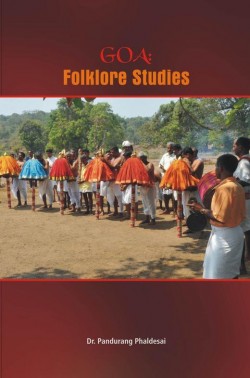
Folklore — comprising of legends, music, oral history, proverbs, riddles, jokes, popular beliefs, fairy tales and customs — continues to be an important branch of local literature.
This book, by a scholar who retains close touch with the grassroots, looks at a Goa that is still waiting to be adequately understood. It is based on original field work and studies of various aspects of folklore. It touches on folk songs, songs to Mother Earth, local musical instruments, local festivals, ritual hunts, temple music, the Sixth Night, firewalking, local mendicants, folk cures, “witch-craft”, ethnography issues in Goa, ethnomusical traditions, the potter’s wheel, sculpting images of the gods, ancestors and spirits, Kunbi song and ritual, appeasing via sacrifice, snakes and beliefs, Goa’s endangered folk-plays, beast patrons of the clans, Kunbi creation beliefs, Kunbi worship, good and bad omens, sea rituals, local riddles, worshipping Ganapati, asuras, Shakti workship in Goa, wedding symbols, rituals from the field and more.
Dr. Pandurang Phaldesai specialises in folklore studies, cultural anthropology and cultural history. Besides five books, he has several articles and research papers to his credit. He is the recipient of a couple of research fellowships and the prestigious State Cultural Award of the Government of Goa for his contribution to folk art and folklore studies. He has long been the Member Secretary of the State academy of the arts, Kala Academy in Goa.
Says the author: “Most of the feasts and festivals of Goan Hindus and Christians are linked to each other. This is because of the fact that both come from the same ethnic stock. Religion occupies an important aspect of cultural life of the people. As such, efforts have been made to cover important rituals, dances and folk performing arts, local cults and festivities. This book describes some untold stories of fertility rites, various rituals, symbols and practices of various sections of the Goan community. A great deal of research has gone into preparation of this book. One can say that it is the outcome of my intense field study of about four decades in Goan villages. I have made an attempt to bring to the light new material on the art and culture of diverse parts of Goa and to demystify it. Very little was known to the intelligent common reader. Through this research-oriented work, I have attempted to shed light on the socio-religious and cultural life of people of Goa.”


